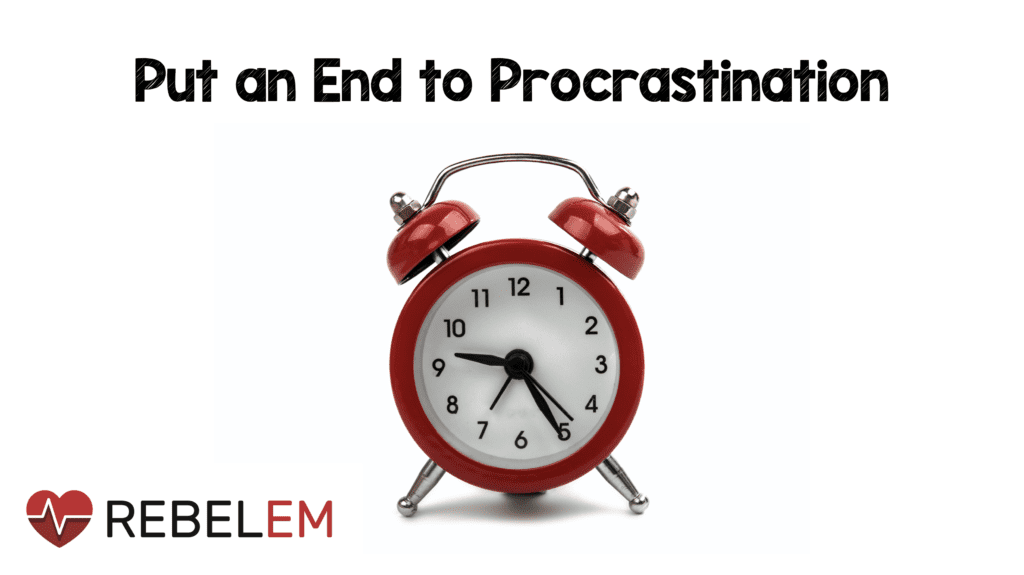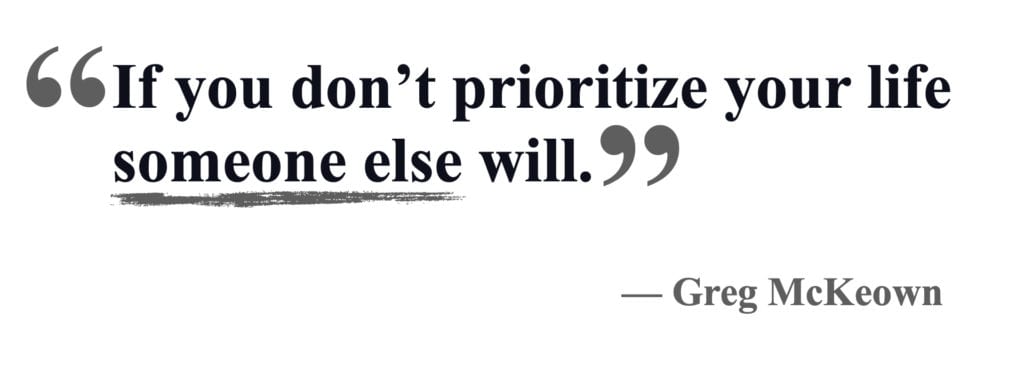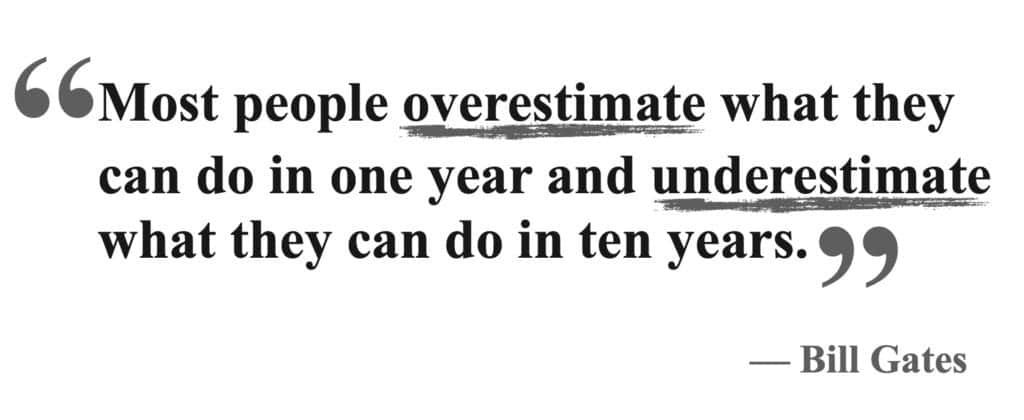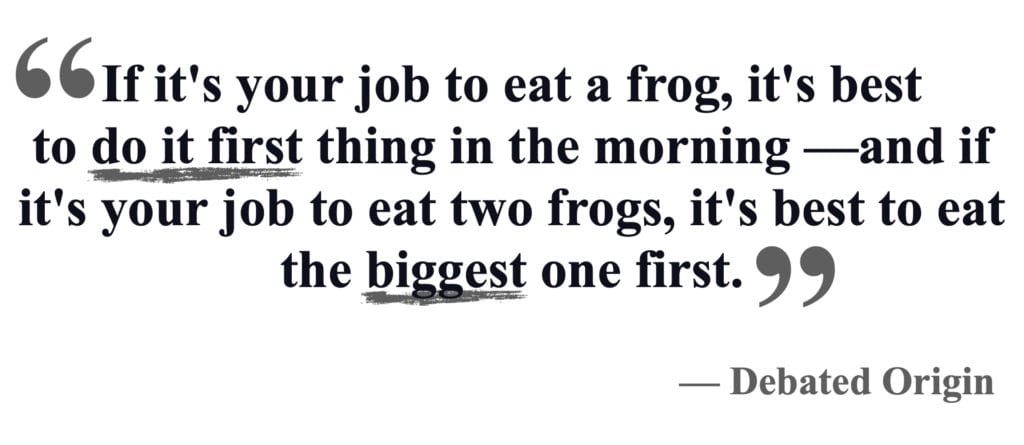
 When I first met Eric, I liked him immediately. I remember thinking: “Here’s a guy who has it all figured out.” At 33 years old, he rapidly ascended the academic ranks and was already applying for a residency program director position at my home shop. He had many publications, national lectures, and blog-posts to his credit. I was five years older and just starting my academic career with little to show thus far.
When I first met Eric, I liked him immediately. I remember thinking: “Here’s a guy who has it all figured out.” At 33 years old, he rapidly ascended the academic ranks and was already applying for a residency program director position at my home shop. He had many publications, national lectures, and blog-posts to his credit. I was five years older and just starting my academic career with little to show thus far.
There seems to be an “Eric” at every job. We all know these highly motivated individuals. They are on the fast track to success while we chug along, seemingly in slow motion. They are running blogs, producing podcasts, cranking out publication after publication, and speaking at national and international conferences. Let’s not forget, they also run 5 miles before the rest of us get out of bed! They never seem stressed, they have limitless bandwidth, and they are always eager to help. While we have many projects circling in our heads, we cannot seem to make any progress to move them forward. We have to ask ourselves: “What are they doing that we are not doing?”

Many obstacles stand in the way of success and lead to procrastination. However, we often fabricate these perceived roadblocks. We feel we do not have the time or the specialized training, or someone else is already doing the same thing, and so we give up before we even get started.
To those outside the medical profession, it may seem odd that highly accomplished physicians feel insecure. However, imposter syndrome is real, and I have admittedly fallen victim to it on numerous occasions. To combat these insecurities, we have to accept responsibility for all things, both good and bad, in our lives. When we blame others for our circumstances, we lose control of our destiny. Taking ownership allows us to take back control and make progress towards our goals.
For example, during the first wave of the pandemic in April of 2020, I had a particularly memorable code. We had not received pre-notification from EMS. Paramedics found the patient in cardiac arrest a few blocks from the hospital and immediately began CPR, scooped up the patient, and sped to the ED. The patient arrived with no definitive airway and no IV or IO access. We were unprepared and needed the vital pre-notification time to don PPE and ready our equipment. Many code team members were not wearing full PPE, but we went to work.
This cardiac arrest seemed more chaotic than usual. The team seemed confused and apprehensive. I’m sure they were afraid; I was. Later, when debriefing with a senior resident, we both agreed this was a bad code. We went through all the ways the code could have gone better: “The medics were inexperienced, the nurse was nervous, the respiratory therapist was slow to bring the vent, the tech was performing compressions poorly, the intern was fear-stricken.” After a few minutes, we both realized that we were to blame. We were the most experienced members of the team. If the team had not performed well, it is because our instruction was inadequate. Blaming others allowed us to feel good about ourselves momentarily. However, the outcome had not changed, and there was no path to enlightenment. Accepting responsibility and recognizing our faults gave us respect among our peers and concrete goals to improve upon for future codes.
Only by taking ownership can we fully adopt a growth mindset. We cannot be afraid to fail, and we must realize that all things are learnable once we accept responsibility. On inventing the light-bulb, Thomas Edison stated: “I haven’t failed — I’ve just found 10,000 ways that won’t work.”

I always knew I wanted to be in academic emergency medicine. When I first accepted a position as an assistant clinical professor, I could not help but feel a little unqualified. Nearly all of my colleagues had a subspecialty or well defined clinical interests. I had neither, and imposter syndrome shook my confidence. I accepted many projects, some of which I had an interest in, but some I did not. I made progress in lots of different directions. If I had focused my efforts on one goal, perhaps I would have made a great deal more progress.
I have read many books, articles, and blog-posts on productivity. Despite considerable differences, one concept that appears repeatedly is “Clarity.” Procrastination is often born out of confusion and uncertainty. It is imperative to formulate clearly defined goals and assess whether an opportunity helps progress towards those goals. We may be procrastinating because we should not have accepted the project in the first place.
Write your goals down. Be as detailed as possible and specify deadlines. People with clearly defined written goals are more productive than those without. Also, having clearly defined goals makes it easy to say “No” to opportunities that are not in line with those goals and frees up bandwidth to work on what is essential.

Consider your calendar hallowed ground. Do not put anything on your calendar that is not a hard deadline or appointment. When I started on my productivity journey, I made the mistake of adding all my tasks to my calendar, making it extremely difficult to navigate. Having everything on the calendar creates the sense that everything is equal and meaningful — if everything is important, nothing can truly be important. I was often unsuccessful at accomplishing all my tasks. Having essential projects and deadlines adjacent to trivial tasks homogenized their cognitive load in my mind. Eventually, I removed my to-do list from the calendar. Now, I do not always complete all my trivial tasks, but I never miss my essential goals.
Separate the vital few essential goals from the rest and filter and eliminate whenever possible. By identifying our most important goals, we can dedicate our energy to the most impactful activities. If we must procrastinate, we can do so on other trivial activities.

Some may already have clearly defined goals. For those who do not, Brian Tracy’s “Eat That Frog!” can help. The proverbial thinking is you should complete your hardest task (your frog) first, and you can go through the day knowing the worst is behind you. Your frog is highly personal and will differ from day to day. Resist the temptation to plan your frog far in advance. It is impossible to expect the unexpected, and new frogs can hop into our lives without warning. Spend a few minutes before bed identifying your frog and “eat it” first thing in the morning when you wake.
Tracy asks readers to make a list of 10 goals they wish to accomplish in the next year. Then select the goal that will have the most significant impact and move towards that goal every single day.
He lays out a seven-step process to act on your goals, which I utilize for all my projects.
-
Decide Exactly What You Want
- Specify the exact purpose of the goal and what outcome you wish to achieve
-
Write it Down
- Go analog and eliminate all electronic distractions
- Set a deadline on your goal; set sub-deadlines if necessary
- Make a list of everything that needs to be done, from start to finish, to achieve your goal
-
Organize the list into a plan
- Identify the next action to move your project forward
- Take action on your plan immediately
-
Resolve to do something every single day to move toward your goal
- Eat the biggest frog first thing every day

REFERENCES:
- Willink, J., & Babin, L. (2017). Extreme ownership: How US Navy SEALs lead and win. St. Martin’s Press. [Link is here]
- Dweck, C. S. (2008). Mindset: The new psychology of success. Random House Digital, Inc.. [Link is here]
- McKeown, G. (2014). Essentialism: The disciplined pursuit of less. Currency. [Link is here]
- Allen, D. (2015). Getting things done: The art of stress-free productivity. Penguin. [Link is here]
- Tracy, B. (2017). Eat that frog!: 21 great ways to stop procrastinating and get more done in less time. Berrett-Koehler Publishers. [Link is here]
- What Is Eat the Frog? A Dead Simple System for Productivity Minimalists. Todoist. https://todoist.com/productivity-methods/eat-the-frog. Published 2021. Accessed February 3, 2021. [Link is here]
Post Peer Reviewed By: Salim R. Rezaie, MD (Twitter: @srrezaie)
The post Put an End to Procrastination appeared first on REBEL EM - Emergency Medicine Blog.
